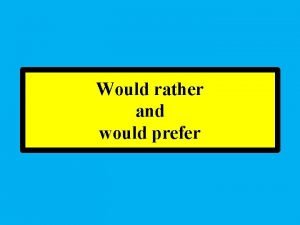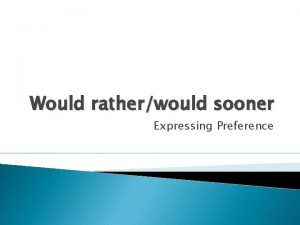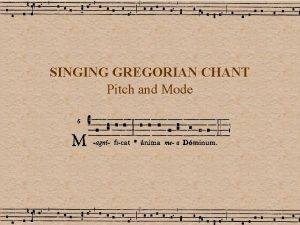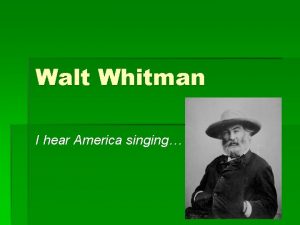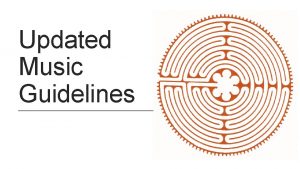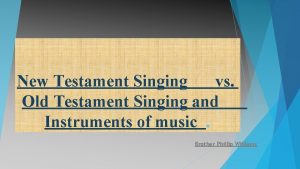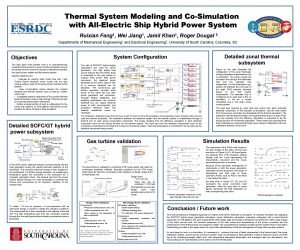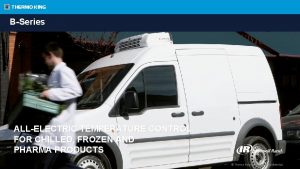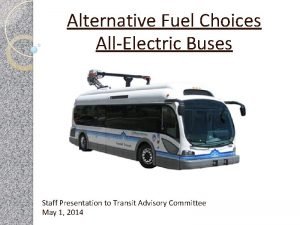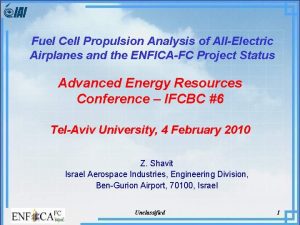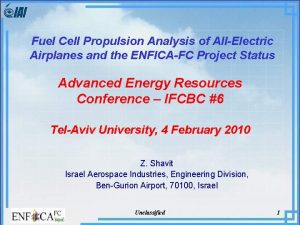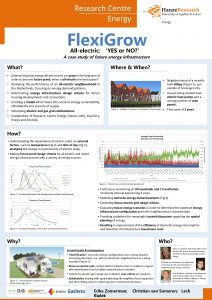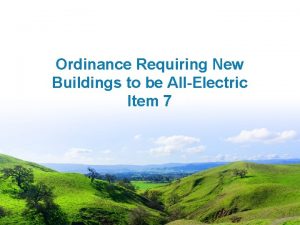Singing Transportation Electric What would an allelectric transportation

















- Slides: 17

Singing Transportation Electric: What would an all-electric transportation system look like? by Jon Rynn jonrynn@gmail. com

Green transformation

To simplify, there are 3 energy systems: 1) Oil, almost 75% used for transport 2) Natural gas that is used for heat 3) Electricity The electricity system can be made sustainable (wind, solar, geothermal, water), the other two can’t. The transportation system is over 99% based on oil; it must become 99% based on electricity to be sustainable.

In 2008 Al Gore declared: “Today I challenge our nation to commit to producing 100 percent of our electricity from renewable energy and truly clean carbon-free sources within 10 years. ” Two years earlier he said: “The maximum that seems politically feasible still falls far short of the minimum that would be effective in solving the crisis” Let’s assume that we put a renewable energy system in place, and that electricity generation will be carbon-free. Then to make transportation carbon-free, it will have to shift from oil to electricity.

An all-electric transportation system §Intercity passenger travel -- High speed rail §Intercity freight ------- High speed and regular rail §Suburbs/Towns to City ------ Fast regular rail §Inter. Suburbs/Towns ---- Light rail/electric BRT §Intracity passenger travel--- Light rail, trolley, subways §Intracity freight ------- Small electric trucks §Intra. Suburb/Town freight-- Small electric trucks §Intra. Suburb/Town passenger travel: Small, low-range (~50 miles), slow (<30 mph) all-electric cars §Cross-ocean passenger: §Cross-ocean freight: some air travel ships? (ask Anthony Perl)

City region suburb City suburb Regular trains to and from suburbs/towns and city Light rail/electric BRT between suburbs/towns

Suburb/Town Residential area Town Center 10 miles, max • Regular train link to city • Light rail suburban links • Main commercial district • Parking structures for electric cars

How much electricity do we need for intracity passenger transportation? • • • New York City, with 8 million people, uses 1. 8 billion kilowatt/hours per year for subway propulsion Assume that electrified buses/light rail would double that, to 3. 6. Since NYC transit use is over 50%, double that again to include the entire population, to 7. 2. Round to 10 billion kw/hrs, to make the calculations easier If the rest of the country was as dense as NYC, we would need about 40 times the electrical use of our fully electrified NYC, or 400 Billion Kw/hr That’s 10% of the current annual output of the country, a bit over 4, 000 billion Kwhr This amount, even a few multiples of it, could easily be handled by a national Interstate Wind System that took advantage of the fact that wind is always blowing somewhere in the continental United States

Intercity rail system City Region High speed rail links downtown of cities

US High Speed Rail Assoc plan 17, 000 miles, for $600 billion, in 20 years

The Millenium Insitute plan for freight and transit • Transferring freight from diesel trucks to electric rail increases BTU efficiency by 20 times • $500 billion over 20 years for freight and regular rail upgrades and electrification, for 110 mph travel • Includes 2 -2. 5 million per mile to electrify 60, 000 miles of track, for $120 -$150 billion (France has committed to electrifying all rail by 2025) • $60 billion per year for light rail/BRT, for an unspecified number of years for towns over 100, 000 ($30 million per mile for 2, 000 miles per year)

China’s high speed rail plan 15, 000 miles, $300 billion, in about 5 years

Europe’s high speed rail plan

“China’s long-term vision calls for high-speed rail routes linking Shanghai to Singapore and New Delhi by way of Myanmar, and someday connecting Beijing and Shanghai to Moscow to the northwest and through Tehran to Prague and Berlin” N. Y. Times, 4/8/10 The Silk Road, medieval and 21 st century?

Is a new transportation revolution possible? In 1900: 4000 automobiles were sold and 8, 000 registered 60, 000 electric rail passenger cars were in operation 38, 000 steam (and electric) locomotives existed In other words, not much oil was used… …and very little electricity; 6, 000 million kwhrs generated, now almost 700 times that amount • Yeah, we can make another revolution! • • •

Rebuild manufacturing at the same time as we transform transportation and energy • Trains and wind turbines use the basic components of the machinery industries • By planning for multi-trillion dollar, multidecade programs, we can stabilize demand encourage companies and people to engage in train/transit, wind and other sustainable technologies • The government will have to design and finance this transformation

Takeaway: Paint a picture • People respond to images and attractive visions of the future, more than to numbers • We need to “free our minds” and imagine what a world will look like that will actually solve the problems of climate change, peak oil, ecosystem destruction, and manufacturing decline
 Would like would prefer would rather
Would like would prefer would rather Base form
Base form Dc o/d per item charge
Dc o/d per item charge Joules per columb
Joules per columb Chapter 21 electric charge and electric field
Chapter 21 electric charge and electric field Electric charges and electric forces lesson outline
Electric charges and electric forces lesson outline Electric potential energy definition
Electric potential energy definition Chapter 21 electric charge and electric field
Chapter 21 electric charge and electric field Electric field and electric potential
Electric field and electric potential Electric force
Electric force Electrical potential formula
Electrical potential formula A suitable electric pump in an electric circuit is a
A suitable electric pump in an electric circuit is a If + past simple
If + past simple Would sooner
Would sooner Ruby green singing painting
Ruby green singing painting Podatus gregorian chant
Podatus gregorian chant Vocal style of india
Vocal style of india When was i hear america singing written
When was i hear america singing written

